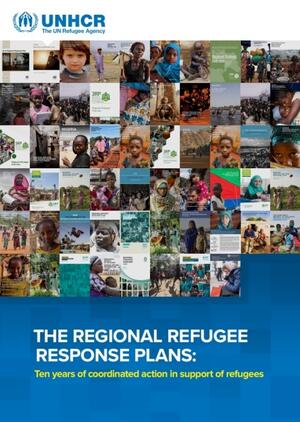Refugee response plans
Refugee response plans
To ensure assistance is coordinated in a coherent and complementary way amongst these actors, UNHCR leads the development of Refugee Response Plans (RRPs).
These plans support host governments to protect refugees in large and complex refugee situations through international solidarity.

States have the primary responsibility to protect refugees. UNHCR has a mandate to provide international protection to refugees and support the efforts of host governments by seeking funding for, and coordinating the international assistance provided by the many stakeholders, such as other UN agencies, international and national non-governmental organizations, faith-based organizations and refugee-led organizations, involved in refugee situations.
The refugee response plans serve as the base from which to implement a strategy and activities as well as advocate for refugee situations in close collaboration with host governments and other partners. In short, a refugee response plan:
- provides a platform and tools to properly plan and coordinate an inter-agency response;
- raises the profile of refugee assistance;
- raises funds for partners;
- provides an overarching vision and coherent engagement in refugee responses in alignment with host government strategies.
Refugee response plans can be adapted for varying contexts and for specific needs. For example, they can be adapted to address mixed refugee-migrant situations or place special emphasis on resilience. When this is the case, they usually share co-leadership with another UN agency, such as the International Organization of Migration (IOM) or the UN Development Programme (UNDP).
The plans can also be developed for different levels of coordination, regional or country.
Regional Refugee Response Plans (RRPs)
Regional Refugee Response Plans (RRPs) are developed to respond to the needs of a specific refugee population found in the neighbouring countries of the region. In 2012 the first RRP was developed, the Syria RRP, which addressed the needs of Syrian refugees in Lebanon, Jordan, Türkiye, Iraq and later Egypt was added.
In 2021, the Regional Refugee Response Plans marked their 10th anniversary. To commemorate this milestone, a special report ‘The Regional Refugee Response Plans: Ten years of coordinated action in support of refugees’ was published, highlighting the achievements of the plans in the last 10 years.
In this time the RRPs have engaged more than 3,000 partners in 12 regional refugee situations covering 50 countries worldwide to provide protection, humanitarian aid and solutions to those most in need. Through these efforts more than 83 million refugees and 65 million host community members were identified for assistance, and they raised US$36 billion to support refugees and host communities.
You can also find RRPs on our Operational Data Portal.
Country Refugee Response Plans (CRPs)
Country Refugee Response Plans (CRPs) include the needs of all refugee populations hosted in a country. In other words, refugees of different nationalities. In emergency situations a CRP can also be developed targeting one refugee population or covering a specific geographic area reflecting the context and response to the new emergency.

